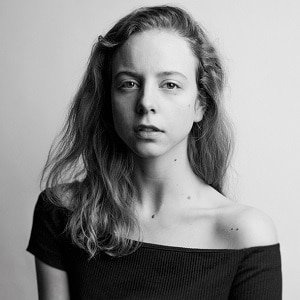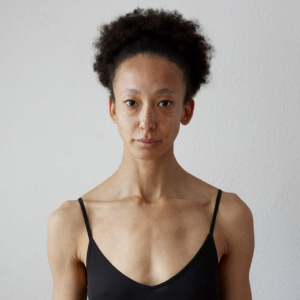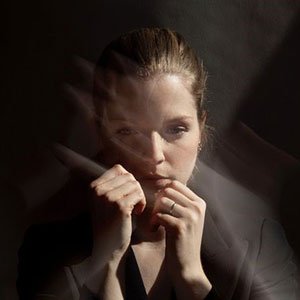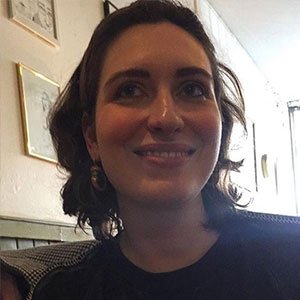‘She dives into this world of powerful sound in an incredibly sensitive way, powerful even in silence. (…). Fragile and stringent at the same time, her dance, between intuition and construction, is powerful, energetic, tender. Yet always somehow fragile. So clever and so touching.‘ Rando Hannemann
Freely translated into English:
Tanz*Hotel Wien, in persona Choregraf Bert Gstettner, accompanies choreographers and performers through a process of creation during his residency, coaching and mentoring programme AAR (Artists At Resort), which lasts several weeks and ends with an exhibition in the rooms of the Tanz*Hotel. The 17th edition of AAR was opened by Elisabeth Schilling with “Sketches on Ligeti”.
Dance and music are almost inseparable. Good, that is hardly surprising. But when a choreographer and dancer asks “how music moves”, “how dance sounds” and how both “free each other”, it makes me curious. If the musical part of these investigations is also by the Austro-Hungarian composer György Ligeti, one of the most important representatives of New Music, I am wide awake. His 18 “Études pour piano” from 1985 to 2001 are characterised by complex rhythmic structures that “create the illusion of different, simultaneously running layers of speed”.
In years of research, Elisabeth Schilling explored this music, which she first heard in 2011. Ligeti was also inspired by the polyrhythmic music of the peoples south of the Sahara. However, he weaved his etudes into vertical and horizontal, i.e. harmonically and rhythmically extremely complex textures. Elisabeth Schilling selected six of these pieces, each only a few minutes long, to present the first results of her work with this music in a solo.
All in black, she appears on the empty stage. The violence of the first recorded etude carries her (and me) away. Her movements are angular to chaotic piano music. When this music, comparatively softer, her arms also flow more gently. She breathes audibly in the silence before the next piece, whose character she anticipates for a few seconds with her dance. Dance and music seem symbiotically connected, organic and harmonious. In the further pieces she illustrates the music physically, it reminds me briefly of the aesthetics of an Oskar Schlemmer. Or she dives into this world of powerful sound in an incredibly sensitive way, powerful even in silence. From expressionism of the 1920s to free jazz, she quotes. The fact that she is also classically trained lets her sound out very briefly. When the music seems to disintegrate into shards, it dissolves, rears up trembling for a moment. Fragile and stringent at the same time, her dance, between intuition and construction, is powerful, energetic, tender. Yet always somehow fragile. So clever and so touching.
Based on these “Sketches for Ligeti” Elisabeth Schilling is currently choreographing her new piece “Hear Eyes Move. Dances with Ligeti” for five dancers and live piano.
Elisabeth Schilling with “Sketches for Ligety”, 16 to 18 October 2020 at Tanz*Hotel Wien.
Photos:
Martina Stapf
Ko-Produzent:
Tanz*Hotel
One of Elisabeth Schilling’s images of FELT was chosen to be the book cover of the recent publication ‘That time of year’ by Marie Ndiaye.
Photographed by: Martine Pinnel
Costume design: Mélanie Planchard
Elisabeth Schilling shows excerpts of choreographic works on György Ligeti’s Etudes pour Piano and Musica Ricercata at the Artist At Resort (AAR) at Tanz*Hotel Wien.
The performances are from 16-18th October 2020.
More information and tickets here.
Photo: Julie Freichel
Newsletter
Subscribe to the e-mail-list

















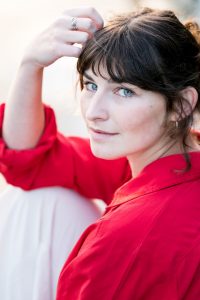








 Lou begann im Alter von 5 Jahren in ihrer Heimatstadt zu tanzen. Im Jahr 2012 schloss sie sich dem Ballet Junior de Genève an, wo sie Werke von renommierten Choreografen wie Andonis Foniadakis oder Hofesh Schechter tanzte. 2016 schloss sie sich dem Kamea Dance Cie in Israel an, wo sie unter anderem Werke des Regisseurs Tamir Ginz, aber auch von Nacho Duato und Marco Goecke tanzte. Seit 2020 ist sie als Gasttänzerin am Grand Théâtre de Genève engagiert und arbeitet seitdem als freischaffende Tänzerin.
Lou begann im Alter von 5 Jahren in ihrer Heimatstadt zu tanzen. Im Jahr 2012 schloss sie sich dem Ballet Junior de Genève an, wo sie Werke von renommierten Choreografen wie Andonis Foniadakis oder Hofesh Schechter tanzte. 2016 schloss sie sich dem Kamea Dance Cie in Israel an, wo sie unter anderem Werke des Regisseurs Tamir Ginz, aber auch von Nacho Duato und Marco Goecke tanzte. Seit 2020 ist sie als Gasttänzerin am Grand Théâtre de Genève engagiert und arbeitet seitdem als freischaffende Tänzerin.
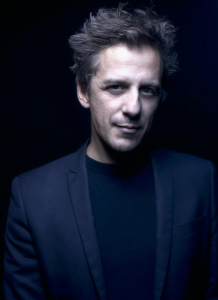
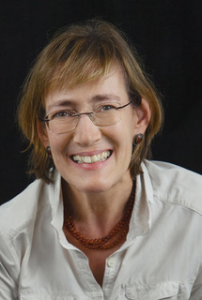
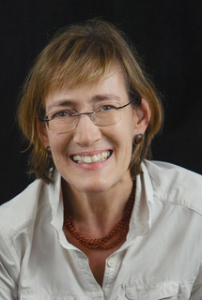
 Johanna Schmitt
Johanna Schmitt Johanna Schmitt
Johanna Schmitt





